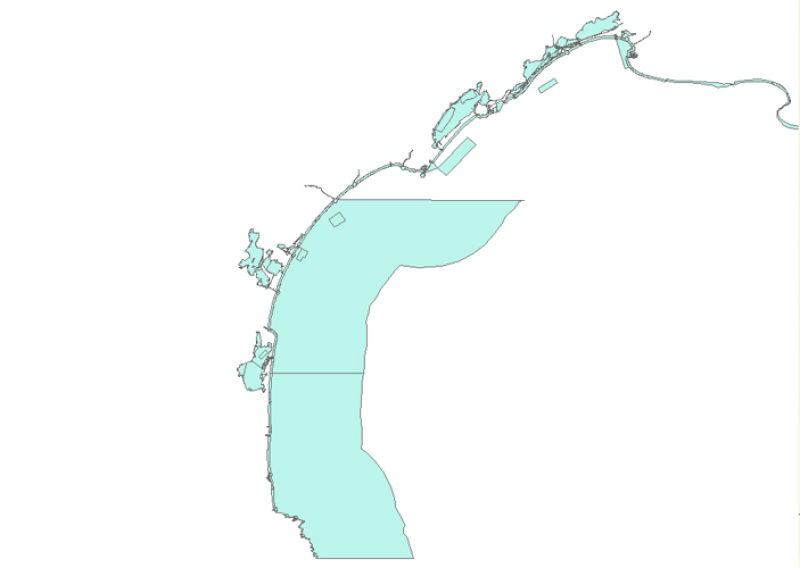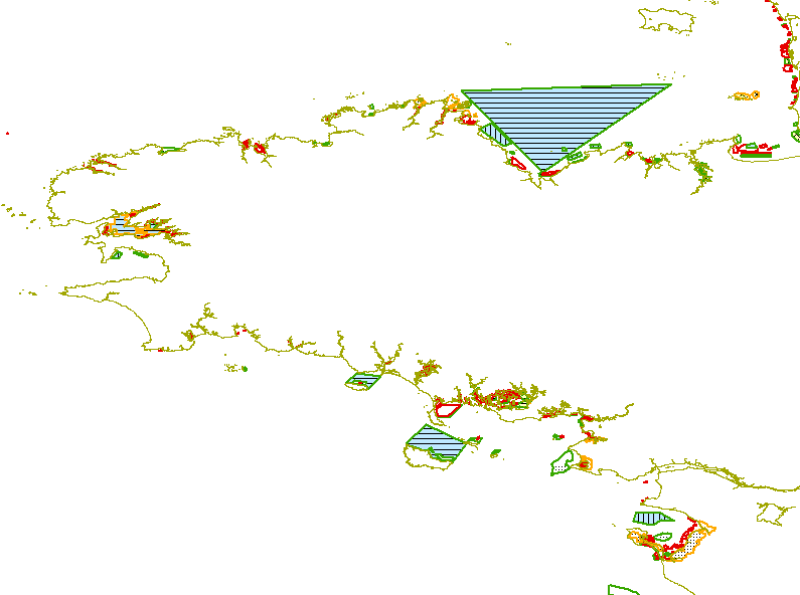conchyliculture
Type of resources
Available actions
Topics
Keywords
Contact for the resource
Provided by
Years
Formats
Representation types
Update frequencies
status
Service types
Scale
-
This map shows the different Fisheries Local Action Groups (FLAGs) mobilised by the implementation of Axis 4 of the European Fisheries Fund (EFF) to design and implement integrated local development strategies for the sustainable development of fisheries areas. The FARNET Support Unit acts as a platform for networking between fisheries areas and as support for the FLAGs. Links to related websites are displayed when a FLAG is clicked.
-

L'Atlas des zones conchylicoles françaises présente les zones conchylicoles et leur classement sanitaire. Celui-ci est établi sur la base des arrêtés préfectoraux de classement, fournis par les Directions Départementales des Affaires Maritimes (DDAM). Déterminés sur la base des résultats d¿analyses menées sur les coquillages de la zone concernée, ces classements sont le reflet de la qualité microbiologique des coquillages présents et de leur contamination en métaux lourds. Ressource en ligne : https://www.sandre.eaufrance.fr/atlas/srv/fre/catalog.search?currTab=simple%20pour%20les%20zones%20conchylicoles&id=608#/metadata/6362596f-29d2-4e94-af9b-04283841e3f7 https://www.atlas-sanitaire-coquillages.fr/classements-sanitaires
-
OYSTERECOVER (http://oysterecover.eu/) : Etablissement des bases scientifiques, des standards et des procédures techniques pour la restauration de la production de l’huître plate européenne, aux moyens de stratégies visant à minimiser la principale contrainte : la bonamiose. L’huître plate européenne fait partie de l’alimentation humaine depuis plusieurs siècles. Les épisodes de grande mortalité et la surexploitation décimèrent les populations d’O. edulis en Europe pendant la première moitié du 20 ème siècle. Ensuite, deux maladies (Marteilia refrigens et Bonamia ostreae) se sont répandues au début des années 70 et 80, réduisant radicalement la production. Malgré les nouvelles pratiques de gestion et des programmes de repeuplement intensifs, la production d’O. edulis est restée faible depuis cette époque. La restauration de la production de l’huître plate européenne pourrait être une belle opportunité pour l’industrie conchylicole européenne. Cinq associations de producteurs et trois PME réparties dans les principaux États Membres producteurs d’huître plate, ont décidé de travailler ensemble avec l’objectif de relever ce défi scientifique et technique. Au vue des dernières avancées scientifiques sur le sujet, l’objectif est de travailler sur la sélection de souches d’huître plate rustique, plus résistante au parasite de la Bonamia. Pour atteindre cet objectif avec succès, les associations de PME et d’autres PME concernées au projet, ont démarché puis se sont associées aux centres de recherche européens et universitaires qui ont principalement contribué aux progrès scientifiques dans la restauration d’ O. edulis et à la recherche d’une souche résistante. Cette couche de données concerne les partenaires du projet OYSTERECOVER
-
REPROSEED, « REsearch to improve PROduction of SEED », est un projet européen qui vise dans un cadre multipartenarial à promouvoir le développement de l’aquaculture de mollusques. L’aquaculture européenne est amenée à jouer un rôle important dans l’économie européenne. Le projet européen REPROSEED (http://www.reproseed.eu/) propose une liste des écloseries de mollusques bivalves en Europe. EUROSHELL propose une cartographie de ces entreprises
-
Les sites de production conchylicoles peuvent prendre plusieurs réalités. Parfois, leur identification est réglementaire et sert à la classification sanitaire des zones de productions. Dans le projet Euroshell, le choix a été fait de cartographier les zones de production dont l’identification a du sens à la fois pour les scientifiques et pour les professionnels. Il s’agit alors d’un nombre restreint de zones, souvent correspondant à une réalité hydrographique. En effet, la conchyliculture est majoritairement installée dans des estuaires, embouchures, baies, fjords, rias ou lagunes. Cette carte présente les sites de production conchylicole français, qui regroupent chacun plusieurs zones. Quelques informations sont données concernant les espèces produites, le nombre d'entreprises et/ou concessions et/ou producteurs, la quantité de production approximative.
-
Les deux principaux objectifs du projet BIVALIFE sont : - de produire une connaissance innovante des organismes pathogènes infectant les huitres et les moules - de développer des approches pratiques pour le contrôle des maladies infectieuses et des mortalités que ces pathogènes induisent Cette couche de données concerne les points de prélèvements de coquillages effectués.
-
Localisation des organisations professionnelles liées à la conchyliculture dans le cadre du projet EUROSHELL
-
Dans le cadre d’un meilleur dialogue entre les scientifiques et les producteurs européens de mollusques, sont listés, documentés et géolocalisés les organismes qui possèdent dans leurs missions la production ou le transfert de la connaissance relative à la conchyliculture. Il peut s’agir d’organismes de recherche, de réseaux de surveillance, de centres techniques, de bureaux d’études ou d’experts, de structures de formation professionnelle ou d’éducation. La base de données associée comprend des renseignements sur les personnes ressources à contacter, le lien vers le site WEB, les données sur le mode de financement, sur son influence, la taille et l’adresse de la structure.
-

Le lot de données contient les enveloppes des zones d'élevage conchylicole existantes et potentielles par département sur l'ensemble du littoral français.
-

Données présentant le coût des réseaux d'observation et des études en appui à la profession conchylicole portés par le SMEL (Synergie mer & littoral)
 Catalogue PIGMA
Catalogue PIGMA